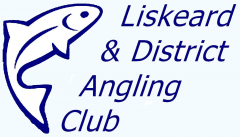As I write this report in late November 2021 we are just about to complete another successful round of broodstock collecting.
LDAC waters in the mid-Fowey have again proved to be the backbone of this work and thanks must go to Jason Drew and Jon Hake for their incredible efforts to get our adult fish to start the 2021/22 programme. Thanks too to the LDAC Chairman for his fish donated in October and also to first-time-donator Pete Tucson.
The 2020/21 programme was very successful in terms of both broodstock numbers into the Hatchery at Colliford and the 40,000 fish we ultimately stocked out.
We achieved our fin-clipping goal of 25% of the fish having their adipose fin clipped to mark them as Hatchery fish.
Fin clipped fish are now quite a regular sighting on the Fowey which is great news. We had to turn down a really nice 8 1/2lb hen fish which was offered as broodstock in November because it was fin-clipped.
We cannot use fin-clipped fish as broodstock so that we keep the DNA and genetic purity alongside the wild-spawned fish.
The weather finally turned in late November – not least to get the leaves down for the last couple of weeks of the fishing season – but to really drive down the water temperature. Fingers crossed for the main river temperature dropping in temperature to protect the wild spawning. We have our chillers ready to go should the water temperature hold up – this is another of the main benefits of the Hatchery where we have the ability to chill down the water in a warm winter as an ‘insurance policy’ against global warming.
Reminder – The Environment Agency are going to judge the success of the Hatchery based on fin-clipped fish caught. While this is somewhat flawed – it remains imperative that anglers should download and complete the FRA/EA Form each time a fin-clipped fish is caught at: https://bit.ly/38RzofO
Richard Grieve
